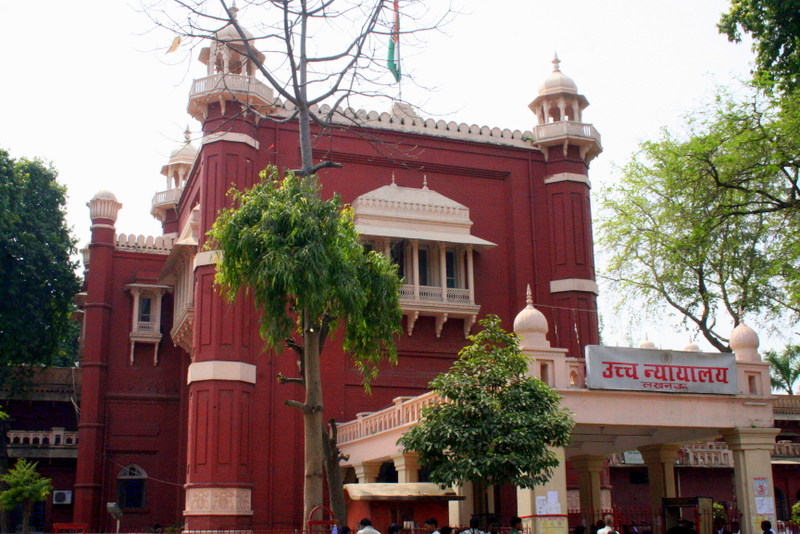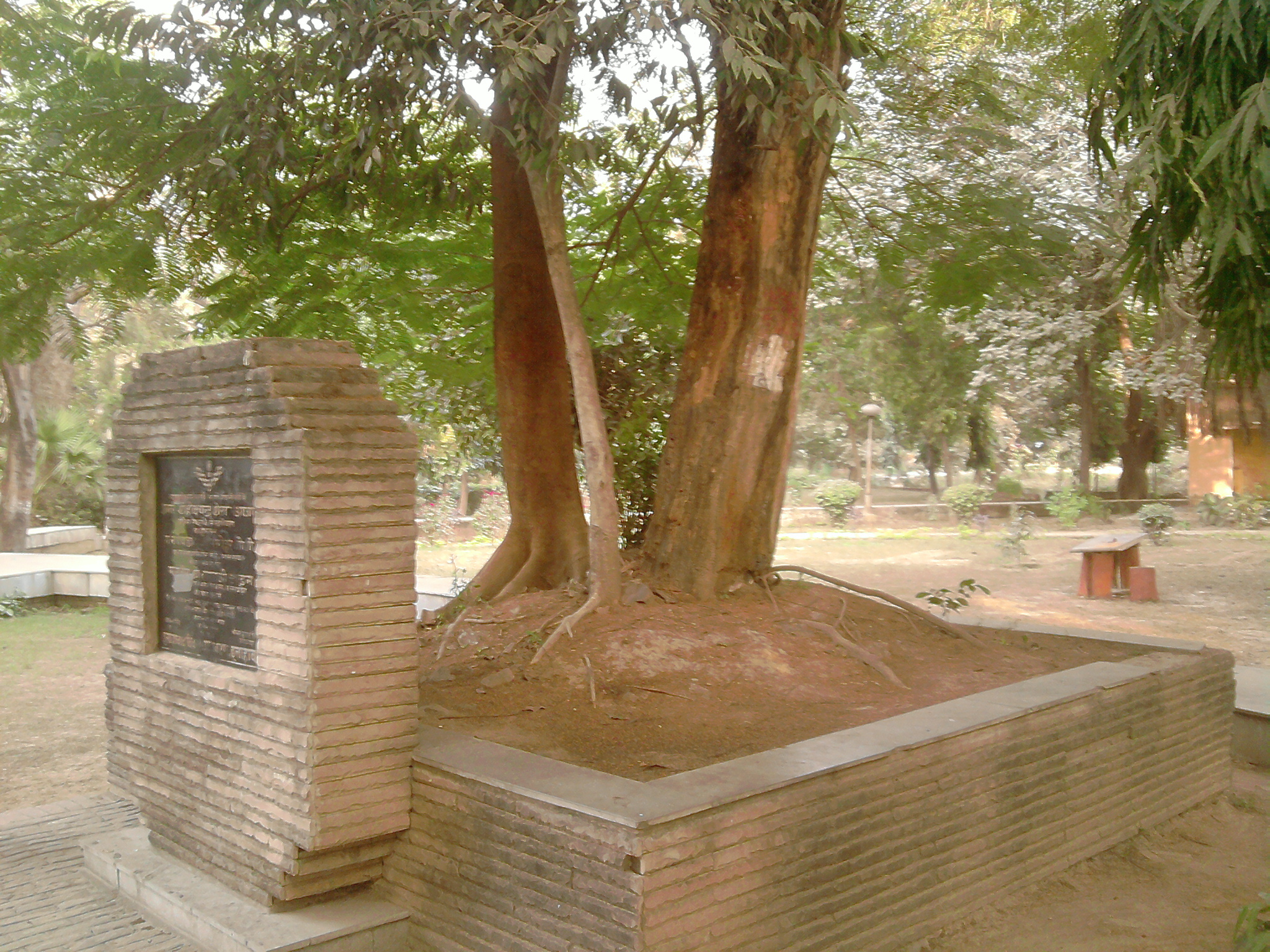|
MG Marg
Mahatama Gandhi Marg, also known as MG Marg, is one of the major streets in Allahabad, named after Mahatma Gandhi. It stretches from Allahabad High Court in the east making intersection with PD Tondon Marg and Nyaya Marg, passing through Civil Lines to the west until it ends at the esplanade. It is lined by shops, malls and a number of historical and religious buildings and offices including notable landmarks like All Saints Cathedral and Alfred Park in the north. It intersects with Sardar Patel Marg making Subash Cross, a notable town square of the city. The road was formerly Canning Road, named after Lord Canning, Governor-General of India The Governor-General of India (1773–1950, from 1858 to 1947 the Viceroy and Governor-General of India, commonly shortened to Viceroy of India) was the representative of the monarch of the United Kingdom and after Indian independence in 1 ... from 1856 to 1862. See also: List of streets and roads in Allahabad Transport ... [...More Info...] [...Related Items...] OR: [Wikipedia] [Google] [Baidu] |
Allahabad
Allahabad (), officially known as Prayagraj, also known as Ilahabad, is a metropolis in the Indian state of Uttar Pradesh.The other five cities were: Agra, Kanpur (Cawnpore), Lucknow, Meerut, and Varanasi (Benares). It is the administrative headquarters of the Allahabad district—the most populous district in the state and 13th most populous district in India—and the Allahabad division. The city is the judicial capital of Uttar Pradesh with the Allahabad High Court being the highest judicial body in the state. As of 2011, Allahabad is the seventh most populous city in the state, thirteenth in Northern India and thirty-sixth in India, with an estimated population of 1.53 million in the city. In 2011 it was ranked the world's 40th fastest-growing city. Allahabad, in 2016, was also ranked the third most liveable urban agglomeration in the state (after Noida and Lucknow) and sixteenth in the country. Hindi is the most widely spoken language in the city. Allahabad l ... [...More Info...] [...Related Items...] OR: [Wikipedia] [Google] [Baidu] |
Mahatma Gandhi
Mohandas Karamchand Gandhi (; ; 2 October 1869 – 30 January 1948), popularly known as Mahatma Gandhi, was an Indian lawyer, anti-colonial nationalist Quote: "... marks Gandhi as a hybrid cosmopolitan figure who transformed ... anti-colonial nationalist politics in the twentieth-century in ways that neither indigenous nor westernized Indian nationalists could." and political ethicist Quote: "Gandhi staked his reputation as an original political thinker on this specific issue. Hitherto, violence had been used in the name of political rights, such as in street riots, regicide, or armed revolutions. Gandhi believes there is a better way of securing political rights, that of nonviolence, and that this new way marks an advance in political ethics." who employed nonviolent resistance to lead the successful campaign for India's independence from British rule, and to later inspire movements for civil rights and freedom across the world. The honorific ''Mahātmā'' (Sanskrit ... [...More Info...] [...Related Items...] OR: [Wikipedia] [Google] [Baidu] |
Allahabad High Court
Allahabad High Court, also known as High Court of Judicature at Allahabad is the high court based in Prayagraj that has jurisdiction over the Indian state of Uttar Pradesh. It was established on 17 March 1866, making it one of the oldest high courts to be established in India. History Prayagraj became the seat of Government of North-Western Provinces and a High Court was established in 1834 but was shifted to Agra within a year. In 1875 it shifted back to Prayagraj. The former High Court was located at the Accountant General's office at the University of Allahabad complex. It was founded as the High Court of Judicature for the North-Western Provinces at Agra on 17 March 1866 by the Indian High Courts Act 1861 replacing the old Sadr Diwani Adalat. Sir Walter Morgan, Barrister-at-Law and Mr. Simpson were appointed the first Chief Justice and the first Registrar respectively of the High Court of North-Western Provinces. The location of the High Court for the North-Western Provin ... [...More Info...] [...Related Items...] OR: [Wikipedia] [Google] [Baidu] |
List Of Streets And Roads In Allahabad
This list of streets and roads in Allahabad covers all of the major streets and roads in Allahabad, India. Streets in India are often synonymous to 'roads'. They are also called Marg or sometimes Path in Hindi. List * Bank Road * Auckland Road * Ahmad Road on the southern edge of the Kareli residential neighbourhood links Noorullah Road at with the Karamat Ki Chauki residential area. * Noorullah Road The road starts from Allahabad Junction and end towards Karelabagh * Cariappa Road * Clive Road * Colvin Road * Cooper Road * Dr. Lohia Road * Drummond Road The road was named after Major General Henry Drummond who was posted in Japan during World War II( during the British Raj ), In later years his son Allen Henry Drummond became A.D.M ( Additional District Magistrate ) somewhere Uttar Pradesh in North India. Allen Drummond passed on in 2003. * Dr Muzaffar Nasim Road it is major road in GTB Nagar kareli Allahabad. *Elgin Road - It is a major road in Civil Lines. * Jawaharlal Neh ... [...More Info...] [...Related Items...] OR: [Wikipedia] [Google] [Baidu] |
Civil Lines, Allahabad
Civil Lines (formerly Cannington also Canning Town) is a Civil Lines neighborhood of Prayagraj, Uttar Pradesh, India. It is the upper-class central business district of the city and is famous for its urban setting, gridiron plan roads high rise buildings, offices, cafes, restaurants, hotels, malls, shopping complexes, theatres etc. Built in 1857, under the supervision of Cuthbert Bensley Thornhill, it was the largest town-planning project carried out in India before the establishment of New Delhi. History Civil Lines was built in 1858 a few months after the end of the Rebellion of 1857, when around 600 Meo people were massacred by the British people in India for their alliance with the Indian Independence Movement activists and eight villages were seized to form a new township. During the early period of its development it was referred to as the White Town of the city as it was predominated by the British people and a very few Indians were allowed. Demographics A popul ... [...More Info...] [...Related Items...] OR: [Wikipedia] [Google] [Baidu] |
All Saints Cathedral, Allahabad
All Saints' Cathedral, also known as Patthar Girja (Church of Stones), is an Anglican cathedral located in Prayagraj, India. Modelled after 13th-century Gothic style churches, it is among the Gothic Revival buildings built by the British during their rule in India. British architect Sir William Emerson, who also designed the Victoria Memorial, Kolkata, designed the cathedral in 1871. It was consecrated in 1887 and was completed four years later. The church celebrates its anniversary on All Saints' Day (1 November) and has been part of the Church of North India since 1970. The cathedral is at the centre of a large open space at the crossing of two of the principal roads of Allahabad, MG Marg and SN Marg. History The land for the cathedral was granted by Sir William Muir, the lieutenant governor of the North Western Provinces; thereafter Elizabeth Huntly Wemyss, his wife, laid the foundation stone on 10 April 1871. British architect Sir William Emerson was employed to design ... [...More Info...] [...Related Items...] OR: [Wikipedia] [Google] [Baidu] |
Alfred Park
Chandrashekhar Azad Park (also known by its former name Alfred Park, and Company Bagh during the Company Raj) is a public park in Prayagraj, Uttar Pradesh, India. Built in 1870 to mark Prince Alfred's visit to the city, with an area of 133 acres, it is the biggest park in Prayagraj. It was renamed by the Uttar Pradesh Government after revolutionary Chandra Shekhar Azad, who sacrificed his life here during the Indian independence movement in 1931. History In 1870, old cantonments were transformed into a park when, after the Rebellion of 1857, new areas were developed. Location The park is in the Georgetown neighborhood and is surrounded by Tagoretown, Civil Lines and the University of Allahabad. Its coordinates are . Landmarks Being a big park it has some of very important heritage and recreational sites. *Chandra Shekhar Azad Memorial, where Azad sacrificed his life *Victoria Memorial. Large canopy made of Italian limestone, dedicated to Queen Victoria. It was opened on ... [...More Info...] [...Related Items...] OR: [Wikipedia] [Google] [Baidu] |
Charles Canning, 1st Earl Canning
Charles Canning, 1st Earl Canning, (14 December 1812 – 17 June 1862), also known as The Viscount Canning and Clemency Canning, was a British statesman and Governor-General of India during the Indian Rebellion of 1857 and the first Viceroy of India after the transfer of power from the East India Company to the Crown of Queen Victoria in 1858 after the rebellion was crushed. Canning is credited for ensuring that the administration and most departments of the government functioned normally during the rebellion and took major administrative decisions even during the peak of the Rebellion in 1857, including establishing the first three modern Universities in India, the University of Calcutta, University of Madras and University of Bombay based on Wood's despatch. Canning passed the Hindu Widows' Remarriage Act, 1856 which was drafted by his predecessor Lord Dalhousie before the rebellion. He also passed the General Service Enlistment Act of 1856. After the rebellion he p ... [...More Info...] [...Related Items...] OR: [Wikipedia] [Google] [Baidu] |
Governor-General Of India
The Governor-General of India (1773–1950, from 1858 to 1947 the Viceroy and Governor-General of India, commonly shortened to Viceroy of India) was the representative of the monarch of the United Kingdom and after Indian independence in 1947, the representative of the British monarch. The office was created in 1773, with the title of Governor-General of the Presidency of Fort William. The officer had direct control only over Fort William but supervised other East India Company officials in India. Complete authority over all of British territory in the Indian subcontinent was granted in 1833, and the official came to be known as the "Governor-General of India". In 1858, because of the Indian Rebellion the previous year, the territories and assets of the East India Company came under the direct control of the British Crown; as a consequence, the Company rule in India was succeeded by the British Raj. The governor-general (now also the Viceroy) headed the central governmen ... [...More Info...] [...Related Items...] OR: [Wikipedia] [Google] [Baidu] |
Transport In Allahabad
Transport (in British English), or transportation (in American English), is the intentional movement of humans, animals, and goods from one location to another. Modes of transport include air, land (rail and road), water, cable, pipeline, and space. The field can be divided into infrastructure, vehicles, and operations. Transport enables human trade, which is essential for the development of civilizations. Transport infrastructure consists of both fixed installations, including roads, railways, airways, waterways, canals, and pipelines, and terminals such as airports, railway stations, bus stations, warehouses, trucking terminals, refueling depots (including fueling docks and fuel stations), and seaports. Terminals may be used both for interchange of passengers and cargo and for maintenance. Means of transport are any of the different kinds of transport facilities used to carry people or cargo. They may include vehicles, riding animals, and pack animals. Vehicles may inclu ... [...More Info...] [...Related Items...] OR: [Wikipedia] [Google] [Baidu] |






